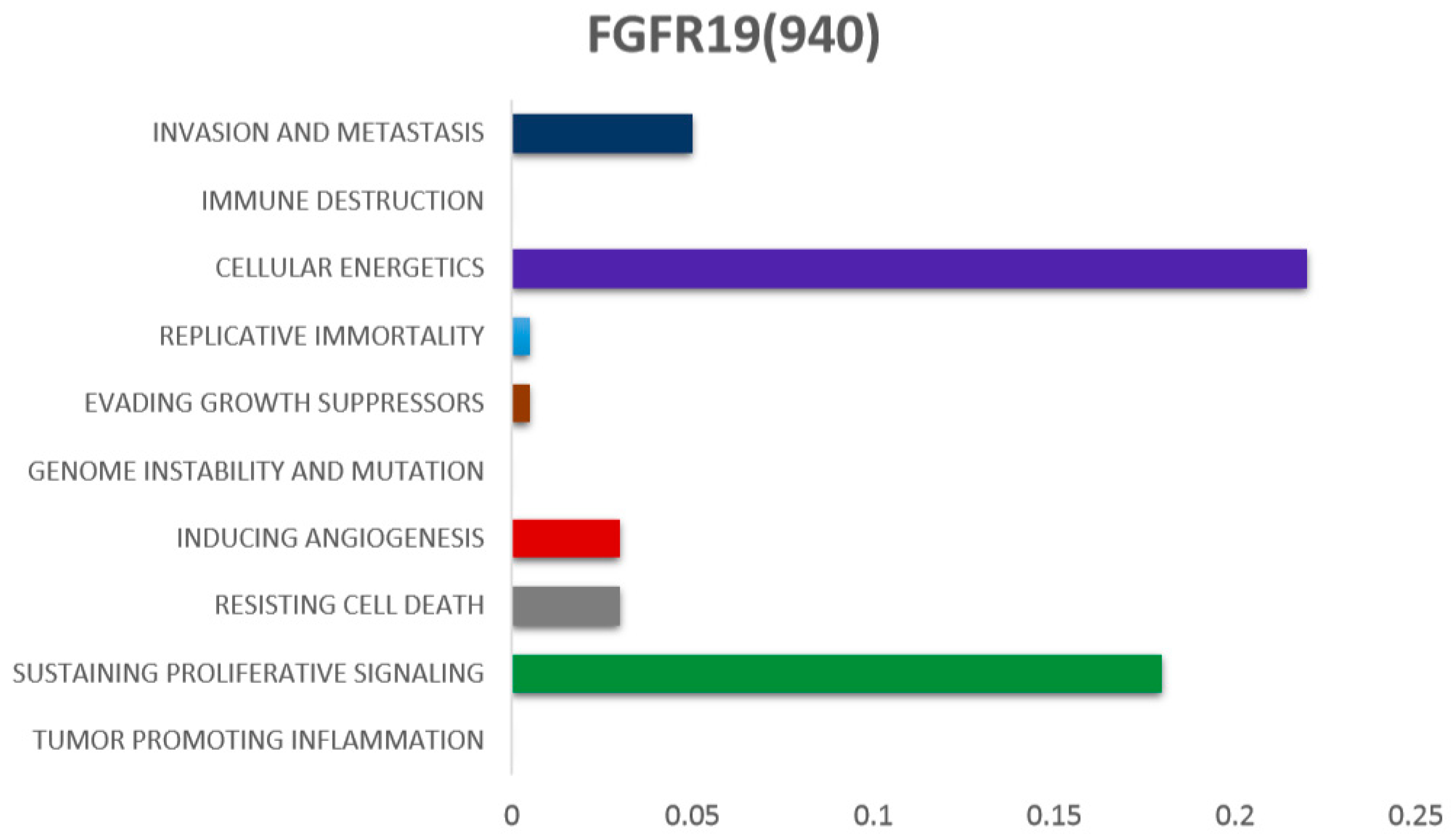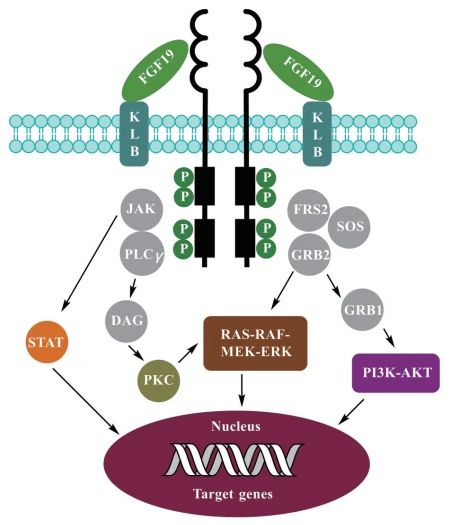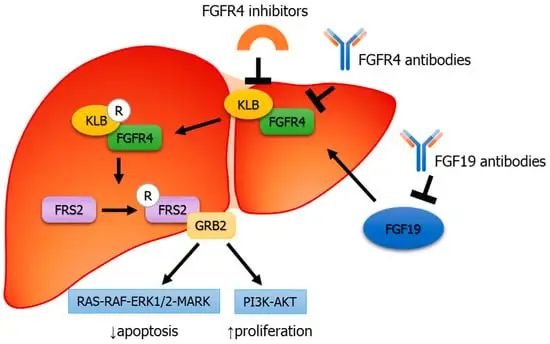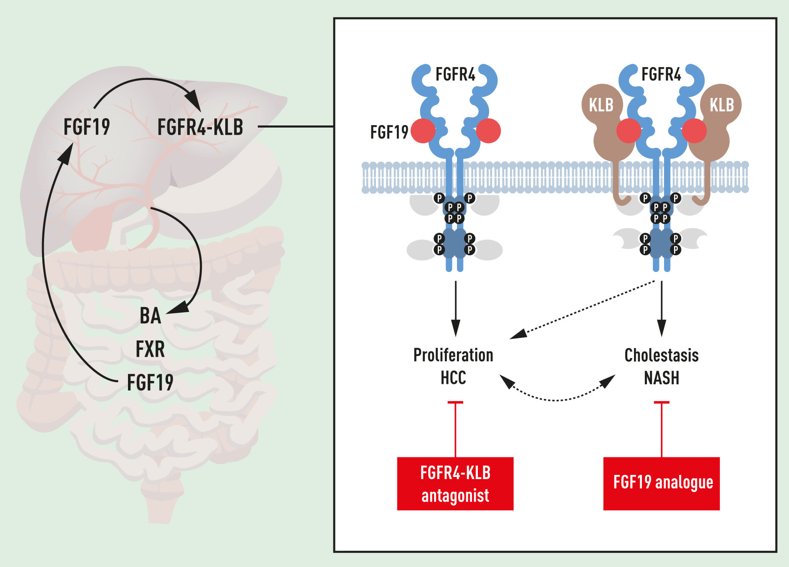Fibroblast Growth Factor 19(FGF19) Signaling Pathway: From Metabolic Regulation to Cancer Therapy

Background
Excessive accumulation of bile acids can stimulate the growth of liver and bile duct cells, induce inflammation, fibrosis, cirrhosis, and even lead to hepatocellular carcinoma (HCC). HCC is the fourth leading cause of cancer-related deaths worldwide, with a low long-term survival rate in advanced stages and a five-year survival rate of less than 20%. HCC can be caused by various factors, including genetic and epigenetic mutations, as well as environmental factors. The high mortality rate in advanced stages underscores the importance of early diagnostic biomarkers and prognosis for HCC.
FGF19, or Fibroblast Growth Factor 19, is a member of the endocrine fibroblast growth factor (eFGF) family. It is primarily synthesized and secreted by epidermal cells of the skin, subcutaneous tissues, and smooth muscle cells of visceral organs in humans. The FGF19 gene is located on chromosome 11q13, a chromosomal region that is one of the most frequently amplified and significant in human cancers. The amplification level of this region can also be used to predict the efficacy of anti-FGF19 drugs.
Proteins of the FGF19 subfamily exhibit low heparin-binding affinity, allowing them to enter systemic circulation and function in an endocrine manner. They play a crucial role in regulating bile acid, glucose, lipid, and energy metabolism, thereby maintaining normal metabolic fluctuations. Elevated expression of FGF19 is closely associated with the development and progression of various cancers, including hepatocellular carcinoma, lung cancer, colon cancer, breast cancer, thyroid cancer, prostate cancer, and cholangiocarcinoma.

Figure 1: Association of FGF19 with Cancer Symptoms
FGF19-FGFR4 Pathway
Human FGF19 is an intestinal hormone induced by bile acid nuclear receptors during the postprandial state. FGF19 can selectively bind to FGFR4, forming dimers and inducing autophosphorylation, which activates the kinase domain and triggers intracellular signaling pathways. This activation leads to various biological responses, such as maintaining bile acid homeostasis in humans. The C-terminal region of FGF19 differs from other members of the eFGF family, enabling it to bind to the transmembrane co-receptor (KL) of fibroblast growth factor receptors. KLB (β-Klotho) acts as a co-receptor for FGF19, enhancing its binding to FGFR4 and participating in the activation of the FGF19 signaling pathway, thereby influencing cell cycle progression and cell proliferation.

Figure 2: Mechanism of FGF19-FGFR4 Pathway Activation
FGFR4 is the only receptor that shows specificity for FGF19. The binding of FGF19 to FGFR4 also activates multiple intracellular pathways, such as the Ras-Raf-ERK1/2 MAPK and PI3K-Akt pathways. This binding can also inhibit apoptosis and NF-κB signaling, regulating genes associated with proliferation.

Figure 3: Binding Mechanism of FGF19 to FGFR4 Leading to Recruitment of FRS2 and Growth Factor Receptor-Bound Protein 2 (GRB2), Ultimately Activating the Ras-Raf-ERK1/2 MAPK and PI3K-Akt Pathways
FGF19 as a Primary Driver Gene in HCC
In HCC patients, amplification of the FGF19 gene leads to abnormal activation of the FGF19-FGFR4 signaling pathway. FGF19 regulates bile acid (BA) synthesis through negative feedback control. By modulating bile acid levels and fat content, the binding of FGF19 to FGFR4, with the assistance of β-klotho (KLB), activates downstream signaling pathways, promoting the proliferation of liver cancer cells, inducing epithelial-mesenchymal transition, and inhibiting apoptosis. This mechanism is effective in treating cholestatic diseases such as primary sclerosing cholangitis (PSC), primary biliary cholangitis (PBC), and non-alcoholic steatohepatitis (NASH). Approximately 30% of global HCC patients exhibit overexpression of FGF19/FGFR4, highlighting the therapeutic potential of targeting the FGF19–FGFR4 pathway.
Drugs that block FGF19/FGFR4 signaling have shown significant efficacy in preventing the development of FGF19-responsive hepatocellular carcinoma (HCC) in animal models. Studies have found that the levels of FGF19 in clinical HCC samples are positively correlated with tumor progression, size, and poor prognosis, exhibiting focal and high-frequency amplification.

Figure 4: Targeting the FGF19–FGFR4 Pathway for HCC Treatment
Several FGFR4 inhibitors targeting the FGF19-FGFR4 signaling pathway have entered clinical Phase I/II trials, including BPI-43487, BLU9931, BLU554, H3B-6527, and FGF401. These inhibitors have demonstrated inhibitory effects on HCC development in preclinical and clinical trials. H3B-6527 has shown potent anti-tumor effects in mouse models and significantly extended survival time. BLU554 has shown responses in FGF19-positive advanced HCC patients in clinical trials. BPI-43487, a potent and highly selective covalent irreversible inhibitor of FGFR4, is being developed for the treatment of FGF19-amplified hepatocellular carcinoma and cholangiocarcinoma, among other solid tumors.
In addition to inhibitors, FGF19 analogs are also being explored for therapeutic use. Aldafermin (M70 or NGM282) is an engineered FGF19 analog that acts through the FGFR1c-KLB and FGFR4-KLB receptor complexes. Activation of the FGFR1c-KLB receptor reduces hepatic fat deposition and improves insulin sensitivity, while activation of the FGFR4-KLB receptor effectively suppresses CYP7A1 expression, making it a potential treatment for non-alcoholic steatohepatitis (NASH).
FGF19 is a key regulatory factor that plays a crucial role in bile acid and energy metabolism through its binding to FGFR4. Its aberrant expression is closely associated with the development and progression of various cancers. Targeted inhibitors of the FGF19-FGFR4 signaling pathway and the analog Aldafermin show promising therapeutic potential, offering new directions for the treatment of HCC and other cancers.
S-RMab® Monoclonal Antibodies
Starter has developed a recombinant rabbit monoclonal antibody against FGF-19, validated in human hepatocellular carcinoma, liver, and gallbladder tissues. This antibody exhibits higher specificity, sensitivity, and stability, providing high-quality companion diagnostic materials.
Product Information
| Gatalog Num | Product Name | Product Parameters | Price |
| S0B2328 | FGF-19 Recombinant Rabbit mAb (SDT-1070-17) | Host : Rabbit | Inquiry |
| Conjugation : Unconjugated |




